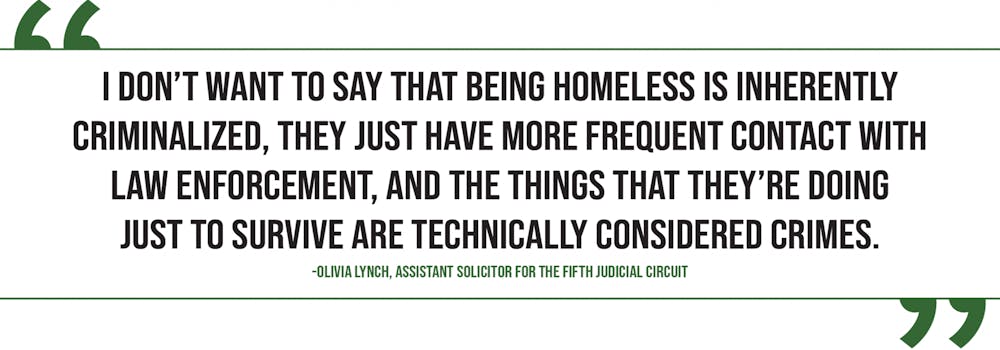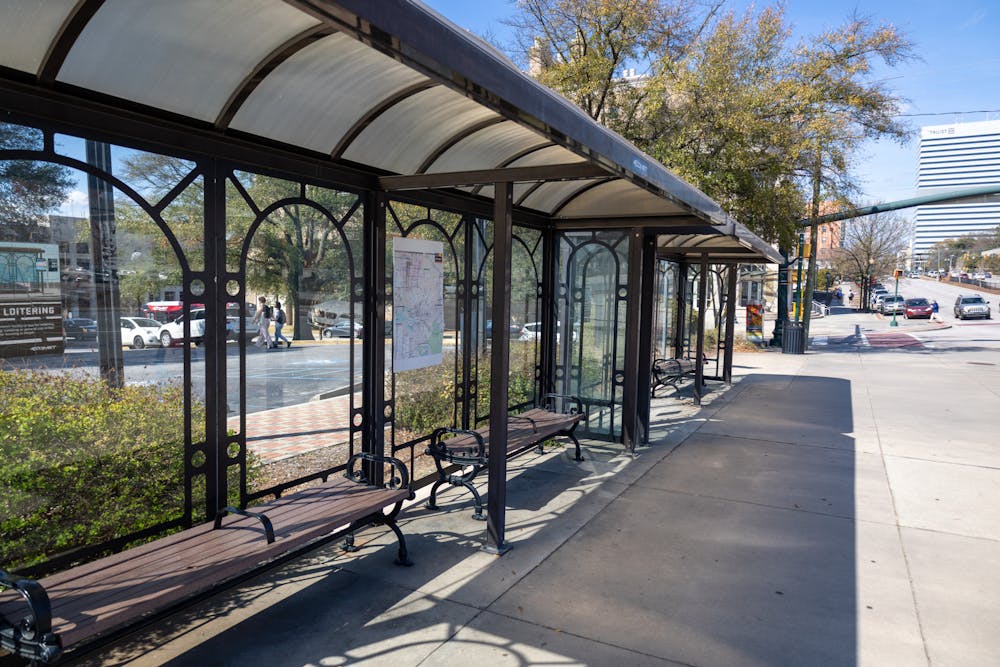Government officials in Columbia have extensively boasted the amount of time, money and resources they have put towards providing for the homeless population, but they care more about improving the city’s image than the ethics of employing anti-homeless practices.
The implementation of policies, legislation, statutes and strategies that make daily tasks difficult or even illegal for unhoused people are examples of the criminalization of homelessness. If you look a little closer, past the performative charity of government officials and wealthy business owners, Columbia is crawling with these discriminatory practices.
Life-sustaining activities such as sleeping, sitting, eating and using the restroom in public areas can land you a fine or jail time, according to the National Coalition for the Homeless. For unhoused people, these fines can pile up and, with no means of payment and no address to be billed to, create a systematic loop of incarceration. This tedious process not only wastes the city’s time and resources but makes it even more challenging for unhoused individuals to find employment.
Hostile architecture, also known as anti-homeless or defensive architecture, is a prime example of the criminalization of unhoused individuals in Columbia.
This term refers to when public infrastructure, or the lack thereof, is purposefully made to be uncomfortable or unusable to deter unwanted loitering, skateboarding and homeless occupancy. Common examples of hostile architecture include public benches sectioned with bars, bolts or spikes on flat surfaces, small or oddly shaped seating designs and even the removal of public seating entirely.
You can find these types of structures scattered throughout Columbia in the form of segmented benches, portable chairs on Main Street and singular seats beneath bus shelters. Each of those tactics can prevent individuals from properly lying down.
The enforcement of these types of structures has been argued to be discriminatory towards people who occupy public spaces more frequently than others, such as low-income individuals, adolescents and unhoused people. The structures seem to signify that public spaces are not welcome for all, especially certain income demographics, and seemingly aim to limit homeless individuals from public sight in hopes of making the city more appealing.
For instance, if you want to sit down next to the opulent Capitol Center to view the variety of different racist statues in front of the Statehouse across the street, there are plenty of anti-homeless bars to rest your arm on.
Columbia city council member Howard Duvall disagrees that these public seating arrangements are discriminatory against homeless people. He said that the city has provided plenty of money and resources for unhoused individuals to find shelter, such as the Transitions Homeless Center on Main Street or Rapid Shelter Columbia, which opened last November on Calhoun Street, but some individuals choose not to accept the help that is available.
“Probably 80% of the people that are in what we call the 'homeless situation' are there because of mental problems or alcohol or drug problems,” Duvall said. “And if you’re in the 20% that don’t have those problems, you can get out of the homeless situation pretty easily.”
Statements such as these contribute to the harmful stereotype that the primary cause of homelessness is addiction. However, despite years of research and analytics, it’s almost impossible to pinpoint any one leading cause of homelessness in the United States due to varying regional and economic factors.
The 2019 Homeless Census and Survey report in Santa Clara County, Calif., found that the primary cause of homelessness from 2013 to 2019 was people losing their jobs. While addiction and mental health issues are also important factors to consider, so is domestic violence, the housing market, racial disparities, poverty and the rising numbers of homeless youth. The thought that overcoming homelessness through any of these situations would be “easy,” regardless of how much money the city has provided, is frankly misinformed and out of touch.
Olivia Lynch, an assistant solicitor for the South Carolina Fifth Judicial Circuit, co-runs the homeless court at Transitions. The homeless court is promoted as a voluntary program that motivates unhoused individuals to complete treatment or rehabilitation in order to have fines or criminal charges waived. The most common types of charges Lynch sees people come in for include traffic violations, lower-level assault and battery and trespassing.
“I don’t want to say that being homeless is inherently criminalized," Lynch said. "They just have more frequent contact with law enforcement, and the things that they’re doing just to survive are technically considered crimes."

Lynch says that she's worried that the hostile architecture throughout the city may have an effect on the safety of unsheltered people.
“It’s frustrating when I see stuff like those benches, and they have nowhere safe to lay in open, lit areas,” Lynch said. "Instead, they get potentially victimized.”
Hostile architecture and legislation targeting unhoused people are not new concepts. The criminalization of homelessness can be traced back to a deep history of segregation and eugenics.
Various examples of exclusionary architecture can be seen throughout the Jim Crow era, such as walls separating Black and white neighborhoods. Ordinances pertaining to the public discomfort of homeless people can be traced back to a concept known as "Ugly Laws" created in San Francisco in 1867. These statutes outlawed the public presence of anyone deemed “unsightly” or “disgusting."
Trying to survive homelessness is difficult enough without being punished for it. Protecting the welfare of our community includes unhoused individuals, even as some people seem to disregard their rights. Implementing systems that try and force individuals into a shelter or jail to keep them out of public sight is highly unethical and evokes questions on the historical literacy of public officials.

